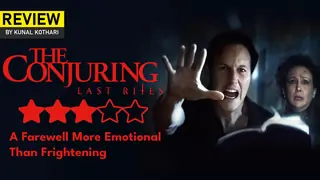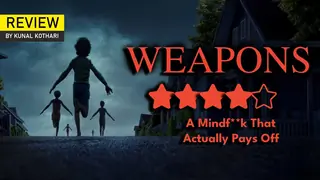How 'Star Trek' Almost Never Happened
In the decade following its 1966 series debut on NBC, Gene Roddenberry’s Star Trek managed to travel far beyond the final frontier despite being sent to the spaceship graveyard after only three seasons.
Published: Friday,Dec 06, 2019 18:54 PM GMT-07:00

What if Star Trek never happened? How is that thought? Certainly scary for all the fans out there. There were a lot of script woes, production delays and ballooning budget almost stopped the franchise in its tracks.
According to a full report in The Hollywood Reporter, in the decade following its 1966 series debut on NBC, Gene Roddenberry’s Star Trek managed to travel far beyond the final frontier despite being sent to the spaceship graveyard after only three seasons. Driven by devoted fan fervor, the “wagon train to the stars” had already demonstrated its staying power with a strong second life thanks to local television syndication, a Saturday morning animated series, Trek conventions, an explosion of merchandising and a finger on the pulse of the pop-culture zeitgeist.
With these shifting genre appetites growing stronger, and with Paramount struggling with the reality of selling a fourth TV network to a broad enough market, then-president Michael Eisner pulled the plug on Phase II in November of that year, just days before it was set to begin production, in exchange for a big-screen experience.“Finally, when they settled on making a big movie with a class-A director, Robert Wise, that put it into a whole different category,” Shatner tells The Hollywood Reporter. “They had many opportunities to present it to the public, and they chose the large screen. It provided an opportunity for Paramount to see that Star Trek would translate [for theatrical audiences].”
“Bob Wise was hired because of his expertise in making what you would call an epic spectacle,” says visual effects director Douglas Trumbull, recognizing the inherent pitfalls of adapting Star Trek “from a lazy, quiet little sci-fi television series” into something worthy of the wide screen. “They didn't get it; to turn that television show into a feature film was an idea that really scared them.”
After so many false starts in various forms, Star Trek: The Motion Picture commenced principal photography in August 1978, and the reality of standing on the set of the Enterprise bridge once again was not lost on Shatner — even if its big-screen look had been upgraded to a more sterile aesthetic.
“There was an enormous familiarity,” says Shatner. “On the other hand, it too was new in that we had time. It was a comparatively leisurely pace to the TV routine.” Despite the constant changes to accommodate the evolving dramatic story, Shatner recalls that there was plenty of levity on the set: “In front of the camera, the story was going to kill us off, and we had to avoid being bemused at the very least by it,” he recalls. “But offscreen, we did play around a lot.”
“Every time we finished the film, they burned the set,” Shatner reports. “That was it. That's the end of it: ‘Thank you very much. It's going to be wonderful. Hope to see you again sometime.’ Nobody ever said, ‘Come back in two years and get ready. We’ll start a script right away.’ Nobody ever said that. Always. Six to seven films. Instead of storing the sets, they thought, ’It’s not cost effective. We will burn them.’ … Every three, four, or five years Paramount would change management, so they weren't about to invest in long-term. The board room is only interested in the immediate profit; investing in basic expenses doesn't interest a lot of people.”
As the cast and crew were wrapping up acting chores on Star Trek: The Motion Picture, a visual effects nightmare was unfolding elsewhere on the Paramount lot: SFX pioneer Robert Abel and his team, tasked with creating the big-screen spectacle of the Enterprise, the Klingon battlecruisers in action, V’ger in space and more, had failed to produce anything that could be effectively used onscreen.
“Computer-driven effects were new at the time, and so everybody was struggling,” recalls Shatner. “It took more time than they thought possible.”
According to Trumbull, that’s quite an understatement: “They hadn't completed any shots, and nothing seemed to work, and the studio was terrified that this movie wasn't going to make its release date.”
The film’s visual effects director concludes, “I just got back from a Star Trek convention in Las Vegas, which really helped me understand better what [Star Trek is about] … The fact that fans are embracing these thoughtful ideas about man's place in the universe is really great and really important, and not a big enough part of our culture. … I think the whole Star Trek phenomena is about the best aspects of human nature.”
Join Our WhatsApp Channel
Stay updated with the latest news, gossip, and hot discussions. Be a part of our WhatsApp family now!
Join NowYour reaction
 Nice
Nice Great
Great Loved
Loved LOL
LOL OMG
OMG Cry
Cry Fail
Fail
















Post a comment